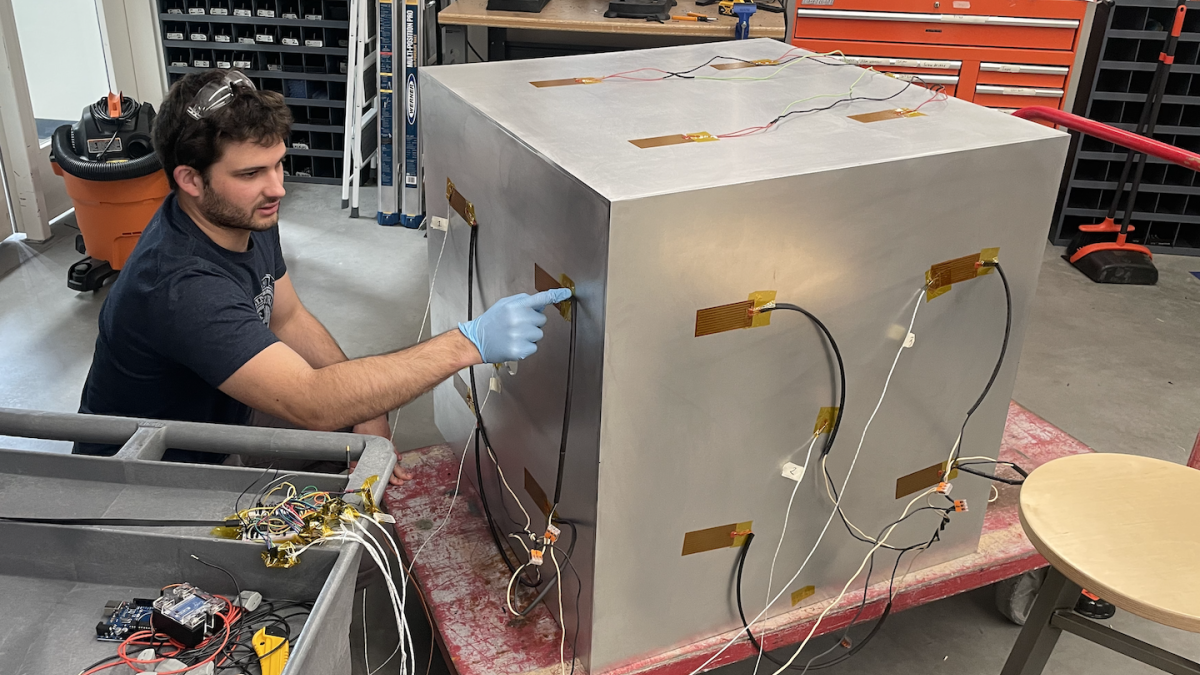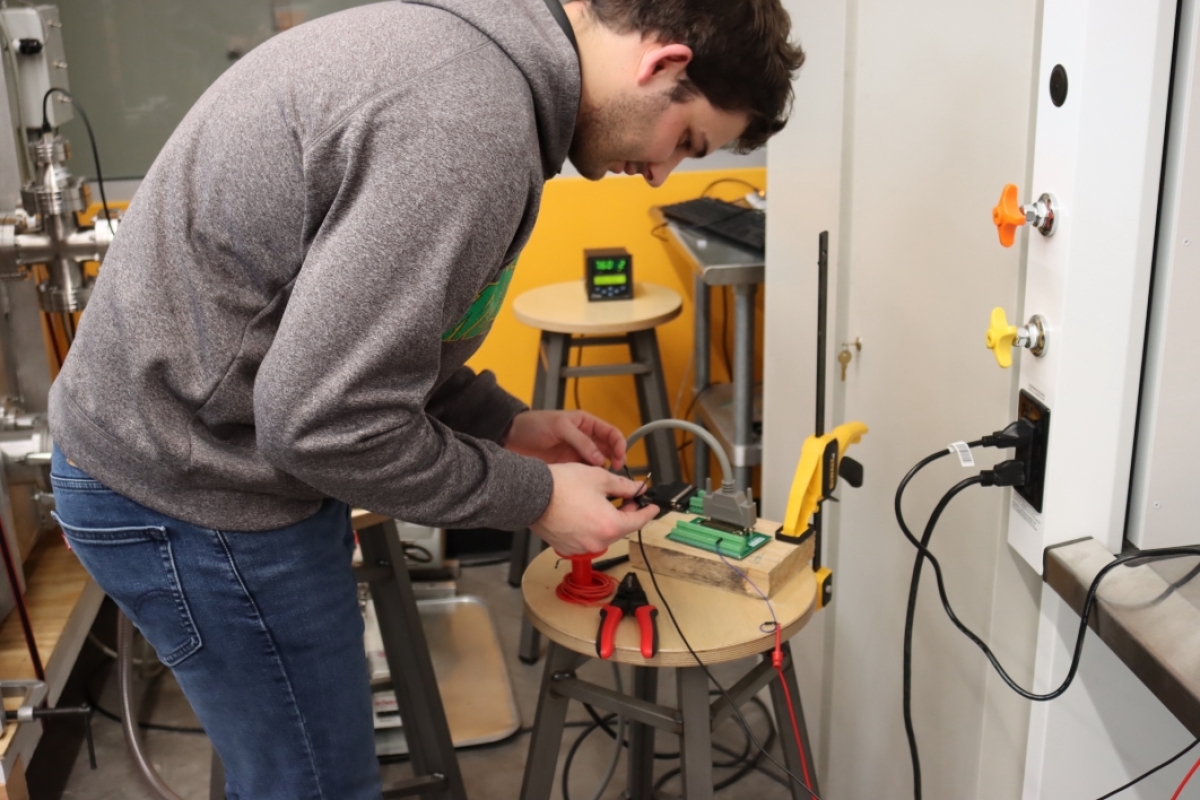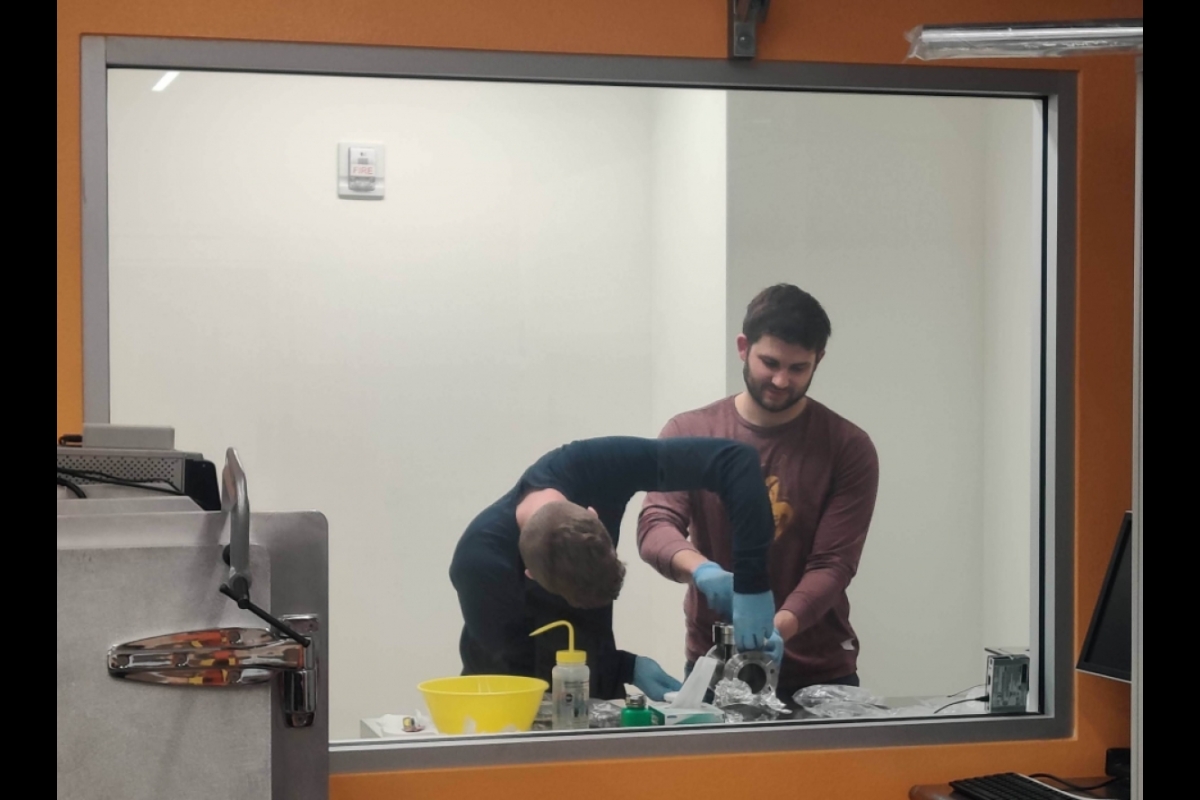Interplanetary Initiative Lab student worker lands job at Blue Origin

After graduating with his master's in mechanical engineering this semester, ASU student Matthew Adkins will join aerospace company Blue Origin as a thermal analysis and management engineer.
Editor's note: This story is part of a series of profiles of notable spring 2022 graduates.
When Interplanetary Initiative Lab student worker Matthew Adkins graduates from Arizona State University with his master's in mechanical engineering this semester, he’s moving on to an engineer’s dream job.
Adkins will become a thermal analysis and management engineer for the Advanced Development Program at aerospace company Blue Origin.
Adkins began his grad program in 2020, and soon after started looking for a student job in an on-campus lab. He knew he wanted to work in aerospace after graduation, so the position as a “lifeguard” at the Interplanetary Initiative Lab (so-called because of their essential role in managing the lab) was a perfect fit.
He quickly became an indispensable part of the team and participated in projects for industry leaders like the ExoCam project, which he and other lifeguards worked on for NASA.
“The lab job is like a real job," Adkins said. "Every time I network with industry professionals, the response I get is that I’m already doing the work that a real-world full-time job would ask you to do as a thermal engineer.”
What he appreciates about the work he’s doing at the lab is that he sees every stage of the project, from concept to testing, all at a quick pace. That helps him better address the needs of the customer because he knows what issues they might face and can avoid them.
Soon, he’ll move on to Blue Origin, where he’ll work on projects like Orbital Reef, a NASA project whose academic sector ASU's Interplanetary Initiative is leading. The work he’ll be doing mirrors the work he’s doing for his thesis, which is doing a thermal analysis of the DORA CubeSat.
“I’m really excited to be part of Blue Origin," Adkins said. "They talk about moving heavy industries into space, and I think it’s really cool to be part of the team that’s working towards that.”
Part of the interview process was a presentation made to a panel, during which he talked about his work at the Interplanetary Initiative Lab. When it comes to the relationship between his time at the lab and his new job, Adkins’ message is clear: “I got this job because of the opportunities I had at the lab.”
Students who would like to get involved or industry professionals looking to take advantage of the lab's facilities can reach out to iilab@asu.edu.
More Science and technology

The Polytechnic School at ASU hits milestone mark at 10 years
The year was 2014.Taylor Swift released “1989.” "Frozen” and its soundtrack were stuck in the minds of many.Facebook was…

Study finds cerebellum plays role in cognition — and it's different for males and females
Research has shown there can be sex differences between how male and female brains are wired.For example, links have been made…

Artificial intelligence drives need for real data storage innovations
In southeastern Mesa, Arizona, construction crews are hard at work on a state-of-the-art data center. The $1 billion…

